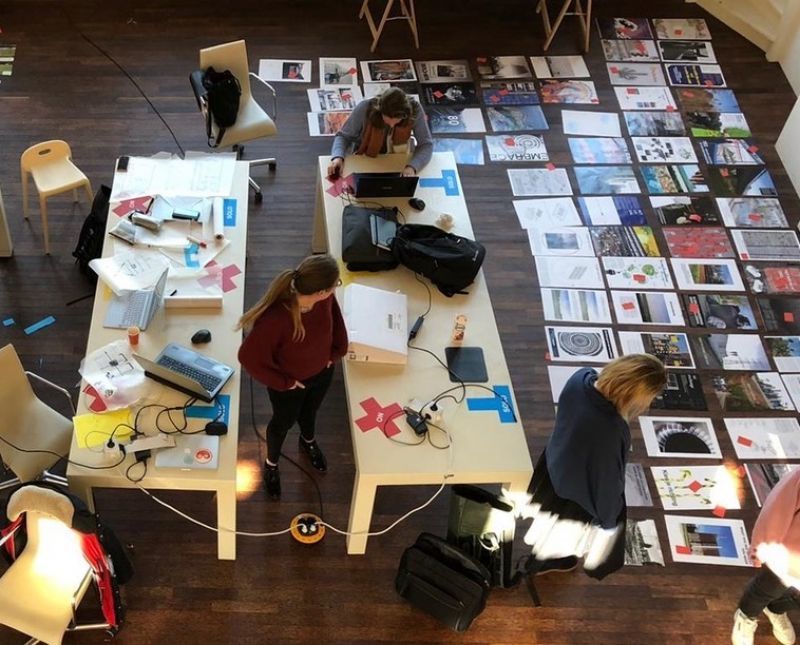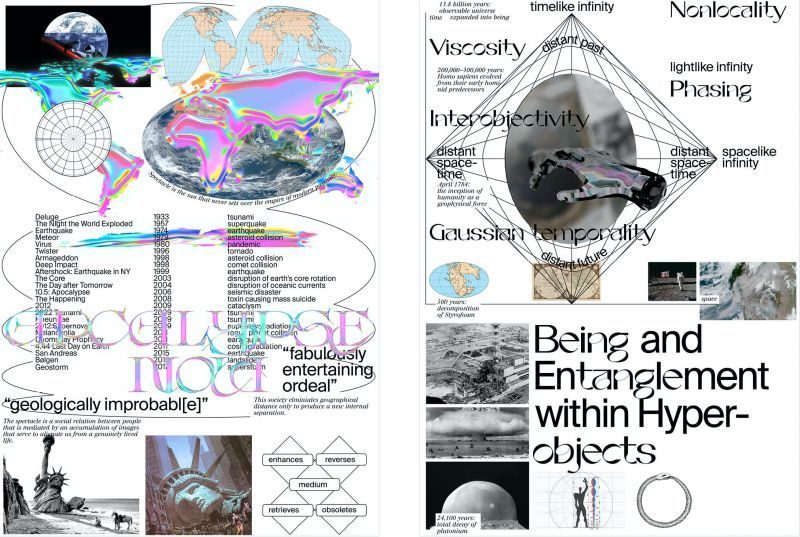KABK x RAvB x IABR: NOW! Designing in Times of Climate Crisis
In response to 'IABR–DOWN TO EARTH: Where can we land?' the Graphic Design (BA) and Non Linear Narrative (MA) departments of the Royal Academy of Art, The Hague (KABK) and the Rotterdam Academy of Architecture and Urban Design (RAvB) have devoted their educational programs to exploring how designers should relate to the climate crisis and what action they can take.
IABR–DOWN TO EARTH asks: Where can we land?
How can we design our lives and our living environment in such a way that the future is sustainable? How do we deal with the shortcomings of "modernity as a project"? What values should we embrace and what should we say goodbye to?

In a three-day workshop at the end of February, a group of students from the KABK and the RAvB curated the exhibition NOW! Designing in Times of Climate Crisis, an exhibition with contributions from almost 150 students specially made for the Keilezaal - the space hosting IABR's main exhibitions.
NOW! Designing in Times of Climate Crisis
400 Posters
This exhibition centers on the more than 400 posters that, arranged in a horizontal grid, almost fill the entire space of the Keilezaal. This field of posters is mounted between four notions to which design has to relate: the extremes, the other, the commons, and the departure.

ELINA ERSDORF: VISUAL ESSAYS TIME'S UP!
Graphic Design BA, Royal Academy of Art, The Hague, 2020
The grid also accommodates ecological elements. The posters question, each in a different way, how design, designing, and especially designers relate to the climate crisis.
The posters were made by more than 120 Rotterdamse Academie van Bouwkunst (RAvB) students and more than 30 Royal Academy of Art The Hague (KABK) students. The KABK students used, among other things, texts by American philosopher Timothy Morton as the basis for their visual essays. The RAvB students used, among other things, Korean director Bong Joon Ho’s film Snowpiercer to reflect on their own design projects.
In addition to the posters, the exhibition includes a number of animated films and there is also a library that includes the sources that were consulted by the students.

PETRA EROS, VISUAL ESSAYS TIME'S UP
Graphic Design BA, Royal Academy of Art, The Hague, 2020
The Four Thematic Lines
The Extremes
The climate crisis leads to more extreme weather conditions. What extremes in terms of water, drought, and temperature can we expect and what adaptations will current and future extremes ask of our living environment? Also, how will we relate to these extremes? Should we perhaps also allow a more manifest experience of these extremes in our living environment, to increase our awareness of the crisis?
The Other
We are all part of a single biosphere. There is no escaping this. Our actions as humans affect other organisms in the biosphere and therefore ourselves as well. A (lack of) action in Rotterdam affects the prospects for action of people and animals in other parts of the world.
The Commons
The climate crisis is the result of an extractive approach to the environment for the sake of perpetual economic growth. We are increasingly aware of the fact that we need a different value model. This model needs to be based on reciprocity and on solidarity with places and communities. What will urban development on the basis of the idea of the commons look like?
Saying Goodbye
We have to say goodbye, not only to certain resources and fuels, but also and especially to certain routines. Saying goodbye can hurt, but also involves reflection on and appreciation of, or perhaps even nostalgia for, elements of the past.
Eventually, we may well come to the conclusion that things have become better for everyone. Letting go makes room for reorientation, because we’re no longer weighed down by the past. Looking back, we may well think: ‘We should have done this much sooner!’
Realization
The narrative, arrangement of available materials, spatial layout, and visual identity were developed during a three-day workshop at the end of February 2021. Together with the RAvB head of the Urban Design Master Program and IABR–DOWN TO EARTH cocurator Thijs van Spaandonk, 12 KABK and RAvB students put together the materials of the various institutes and translated these into a narrative and spatial concept.
Concept, Curation, Design and Realization
KABK:
Abel van As
Amber Meekel
Cami Chebez
Charlotte Alfen
Elinor Salomon
Erae Shin
Esther van der Heijden
Fleurine Brijker
Ieva Gailiušaitė
Jan Wojda
Julia Olijkan
Justine Corrijn
Katie Pellikan
Leona Wehrenberg
Lois van Spijk
Lulu van Dijck
Luna Schadewijk
Marcos Kueh Sheng Pang
Maria Rivero Gonzalez
Marieke Dijsselhof
Niam Madlani
Paulina Trzeciak
Petra Erős
Sophie Sczich
Thora Thogersen
Tinka Kovačič
Tuana Inhan
Weronika Uyar
RAvB:
Amal Habti
Samil Kahraman
Tom Koetsenruijter
Lotte de Koning
Angéla Kortleven
Sven Schouten
Petula de Smit
Nancy Smolka
Thijs van Spaandonk
Anneke Wisse
Milou van Zomeren
Graphic Design:
Petra Erős
Initiative
This exhibition is an initiative of Thijs van Spaandonk (RAvB), Roosje Klap, Marthe Prins (KABK) and George Brugmans (IABR).
Multiyear Collaboration
This exhibition is part of a multiyear collaboration between the IABR and the RAvB that was launched on 28 August 2020 in the Keilezaal, during the start of the past academic year. Connecting the exploratory capacity of design education to the free space of culture, the two institutes jointly explore ways to relate to the climate crisis and which transitions we have to go through.
Details
Date
Location
More info
visit the expo online via instagram: @downtoearth_now


